4 Jungian Psychology Books to Begin Your Studies
In Jung's own words
Jungian psychology is one of the main pillars1 at the heart of my writings and teachings here at The Artemisian. As a theoretical framework, it has given me language to understand the often strange and mysterious experiences I have had. I am an intuitive type2, and life has been colored by the powerful link I have to the unconscious. From prophetic dreams to uncanny synchronicties, I’ve always felt that there is more to reality than what meets the eye. It fueled years of spiritual study and pursuit, and yet, there was something missing. I yearned to understand these mystical experiences more practically, to figure out the psychology behind it all.
Jung’s work was that missing piece. He was a pioneer, willing to follow and explore psychological phenomena, from the seemingly mundane to the taboo. His doctoral dissertation, On the Psychology and Pathology of So-Called Occult Phenomena, was a study of psychic mediumship, the subject was his own cousin. Those early explorations marked the beginning of a long endeavor to map the psyche, to trace the psychic intimations found in cultural and personal symbols, in dreams, in patterns of behavior, both conscious and unconscious. Jung’s influence is clearly found in our modern lexicon and orientations — archetypes, the collective unconscious, shadow, introversion and extraversion, synchronicity — these are all ideas born or championed through the Jungian tradition.
For me, discovering Jungian psychology felt like a homecoming, one that could provide shape and words to what was hitherto unexplainable. My experiences not only mapped naturally onto his theories, they seemed to mutually amplify one another, helping me to creatively blend my studies into an approach that grounded my self-development and strengthened my vocational work. It’s been nothing short of transformational!
And so, I endeavor to provide these same opportunities for those who are also called to the great journey of individuation, whose interests blend the symbolic and the literal, whether you’re curious about the psychological interpretations of dreams and mythology, how to do active imagination or figure out your personality type. I believe reading Jung directly is a part of this process, and I know just how daunting that can be.
Jung’s writing is notoriously dense, exhaustive and difficult to understand. The majority of his published material was packaged into The Collected Works, twenty volumes chronicling nearly sixty years of his career, much of it written in academic and technical language for professional audiences. Further, Jung often draws from a vast range of sources, weaving ancient mythology, religion, philosophy, literature, and many other disciplines…sometimes all in the same paragraph (or sentence!). Suffice to say, it takes a lot of background to grasp what he’s exploring.
The recommendations below are entry points for reading Jung’s work in his own words. They mirror my own early studies and prepare one to go deeper into The Collected Works, should they choose. The list begins with the most accessible texts and increases in complexity.
Perhaps I’ll do another version of this, highlighting my favorite volumes of The Collected Works! I’d also love to create a list featuring books by prominent Jungians (like Marie-Louise von Franz, James Hillman, Murray Stein, Marion Woodman, etc.). If you’d like to see that, let me know in the comments.
Alright, without further ado, let’s jump into the four books3 for an introduction to Jungian psychology!
#1 — Memories, Dreams, Reflections
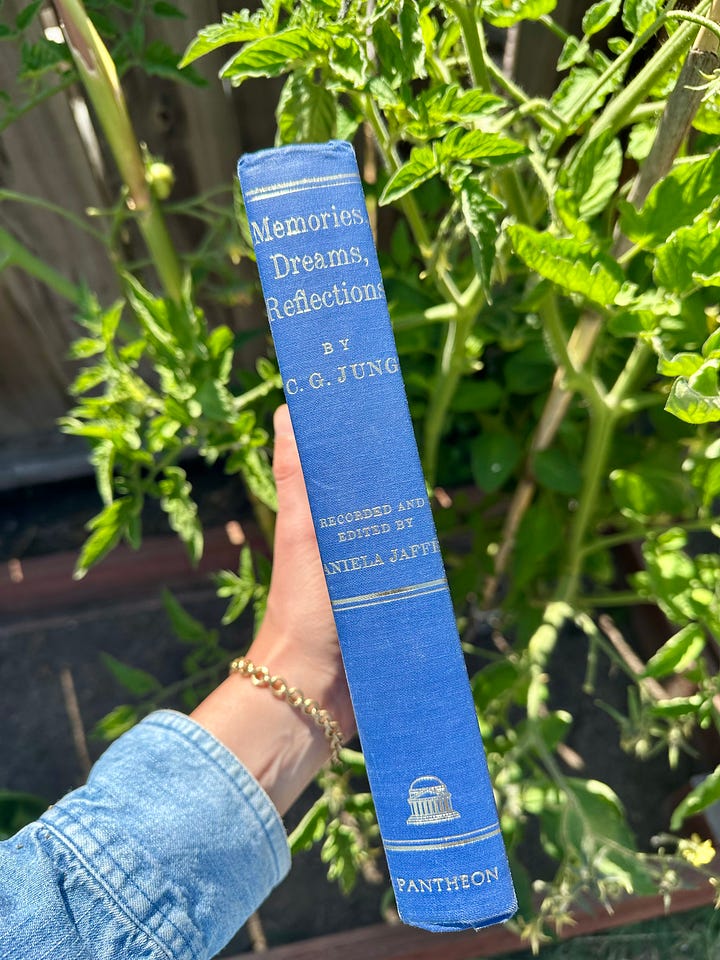
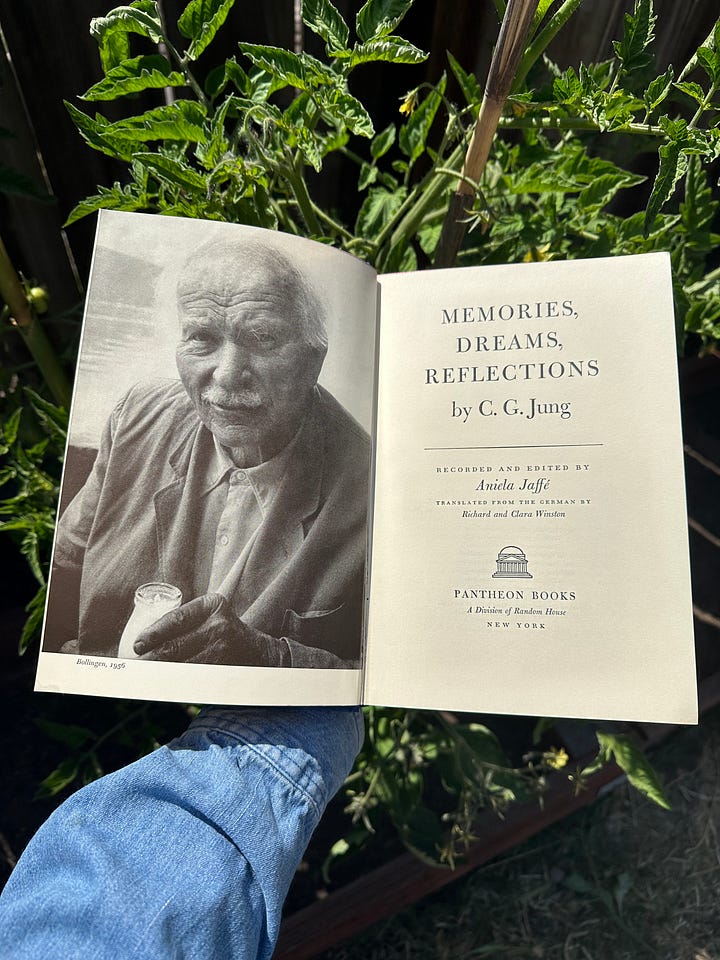
“In the end the only events in my life worth telling are those when the imperishable world irrupted into this transitory one. That is why I speak chiefly of inner experiences, amongst which I include my dreams and visions. These form the prima materia of my scientific work. They were the fiery magma out of which the stone that had to be worked was crystallized…Recollection of the outward events of my life has largely faded or disappeared. But my encounters with the “other” reality, my bouts with the unconscious, are indelibly engraved upon my memory. In that realm there has always been wealth in abundance, and everything else has lost importance by comparison.”
—C.G. Jung, Memories, Dreams, Reflections
Memories, Dreams, Reflections is Jung’s autobiography. It paves the way to understand the major influences of his work: the evolution of his psyche, the moments that shaped and shattered him, the dreams that inspired and unsettled him. Rather than focusing purely on outer events, the book takes you into the trials, explorations and transformations of his inner world. It is the creation myth of Carl Jung, or at least, the closest we’ll ever come to such a thing.
The book begins in his formative years, tracing his studies, early encounters with powerful dreams, his meeting with Freud, their painful separation and the confrontation of the unconscious that followed. It also includes notes on his world travels, info on his near death experience, and reflections of life after death.
A new version of the book will be released this year through the Philemon Foundation, including material that was previously edited or withheld. I’m considering running a book club/read-along in the membership when it’s released!
#2 — Man and His Symbols
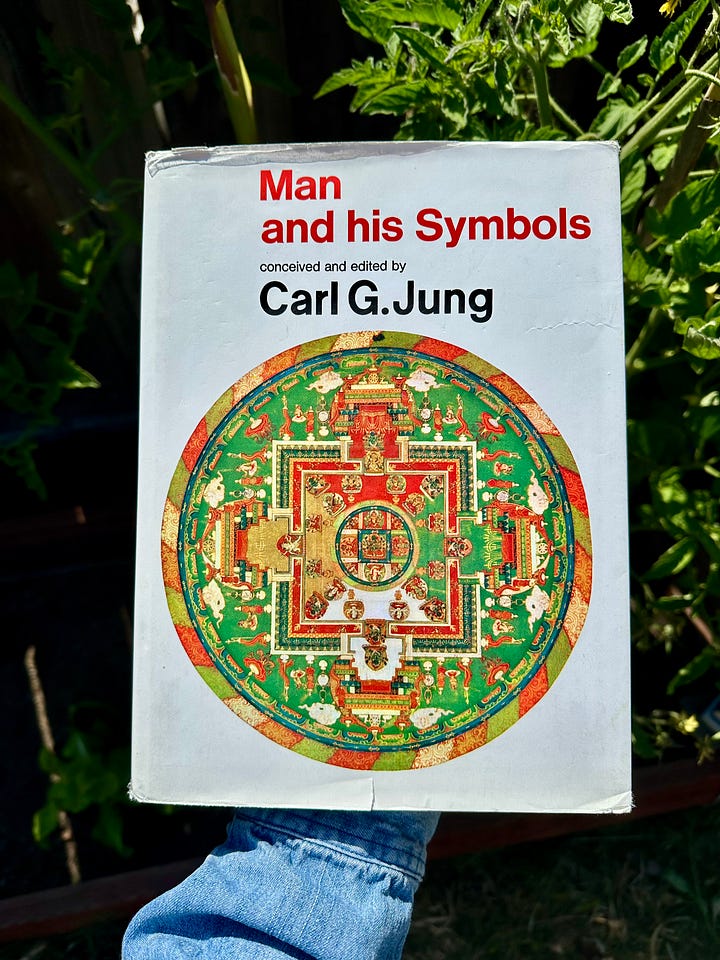

“We should understand that dream symbols are for the most part manifestations of a psyche that is beyond the control of the conscious mind. Meaning and purposefulness are not the prerogatives of the mind; they operate in the whole of living nature. There is no difference in principle between organic and psychic growth. As a plant produces its flower, so the psyche creates its symbols. Every dream is evidence of this process.”
—C.G. Jung, Man and His Symbols
In the final years of his life, Jung was approached to create a book detailing his psychology for non-specialists, a resource for the everyday individual. At first, he declined, saying he had no desire to popularize his work, nor did he feel confident that he had the energy or time to attempt such a task. But sometime later, he had a dream.
In it, he was no longer seated in his study, speaking to doctors and psychiatrists as per usual. Instead, he stood in a public space, addressing a large crowd. They were listening intently, and they understood him. The dream changed Jung’s mind and became the catalyst for what would become Man and His Symbols.
Each section of the book accessibly walks the reader through essential Jungian ideas: the process of individuation, the role of myth and symbol, the significance of dreams, and more. While only the first chapter is written by Jung, the book as a whole is an invaluable resource. Subsequent chapters are authored by his close collaborators and fellow Jungian analysts, including Marie-Louise von Franz, Joseph L. Henderson, Jolande Jacobi, and Aniela Jaffé.
#3 — Consciousness and the Unconscious
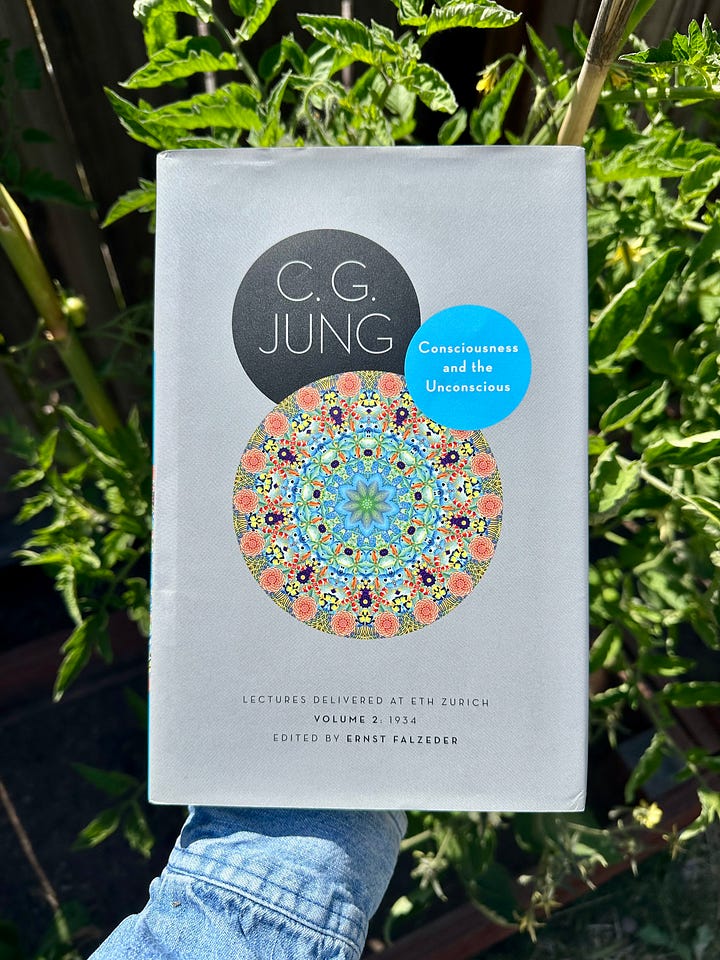
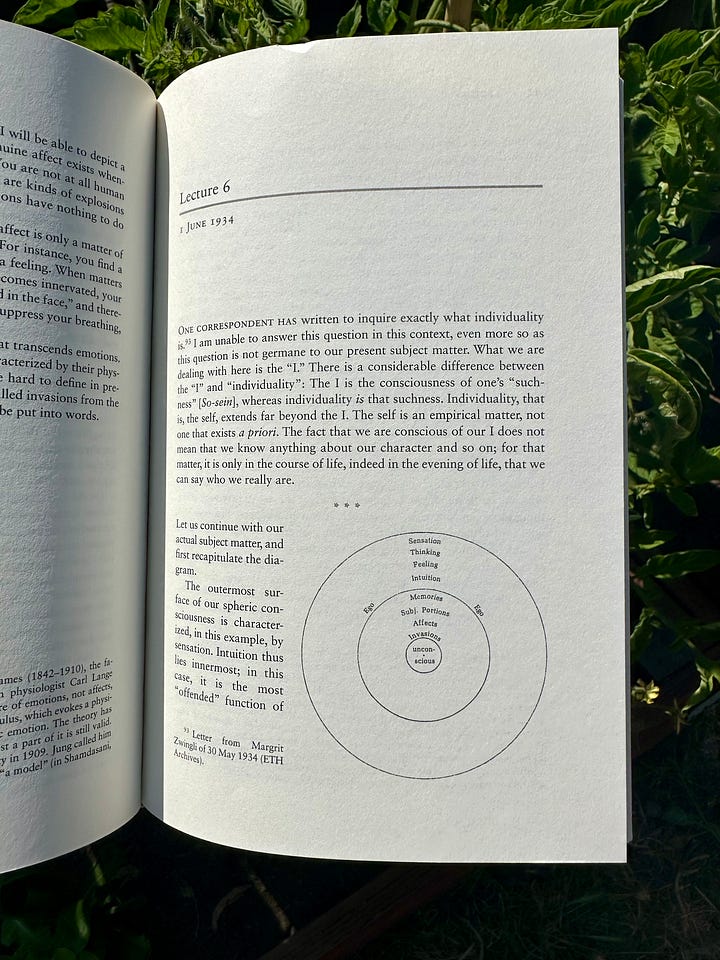
“As in the other semesters, Jung was confronted with a general audience, a context that gave him a unique opportunity to present a full and generally accessible account of his work, as he could not presuppose prior knowledge of psychology. Thus we find here the most detailed, and perhaps most accessible, introduction to his own theory.”
— From the editors general introduction of Consciousness and the Unconscious
Consciousness and the Unconscious contains a series of lectures Jung gave over the course of eight years while teaching at a university in Zurich. The audience was broad and varied, ranging from university students, devoted followers, to curious members of the public. With such a diverse crowd, Jung approached the material from the ground up.
The book offers a wide-ranging introduction to key concepts in Jungian psychology, including typology and the cognitive functions, dreams, the structure of the psyche, and the collective unconscious. The language is more direct and less technical, intentionally crafted to be accessible to a general audience.
What I love most about it is the inclusion of diagrams! The Collected Works rarely has visual aids to accompany Jung’s theories, but this lecture series includes several, some of which I feature in classes here at The Artemisian.
#4 — The Portable Jung
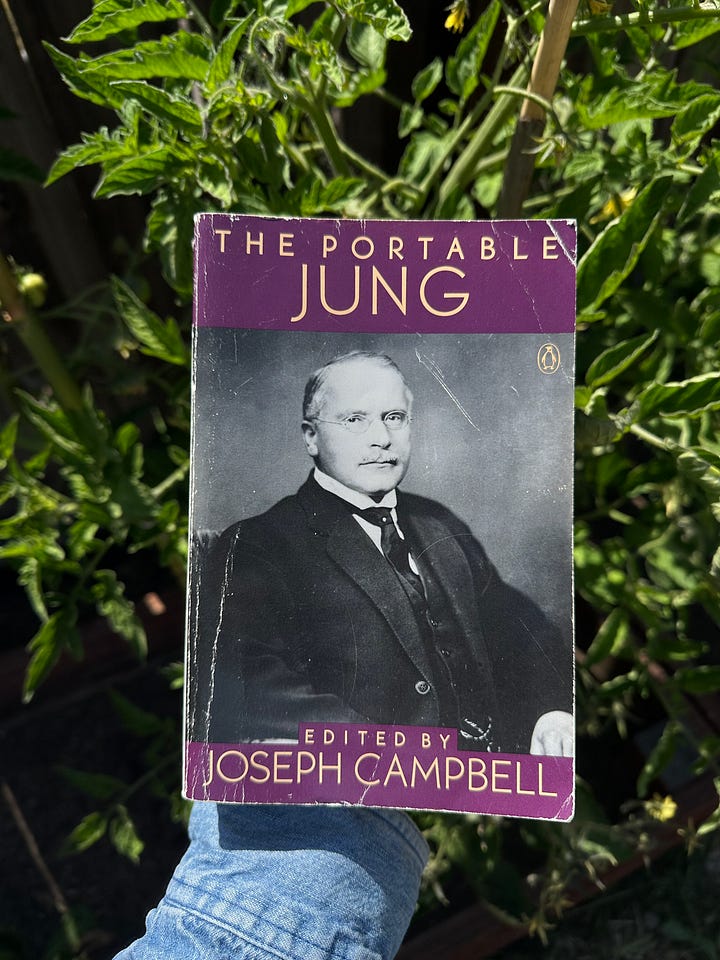
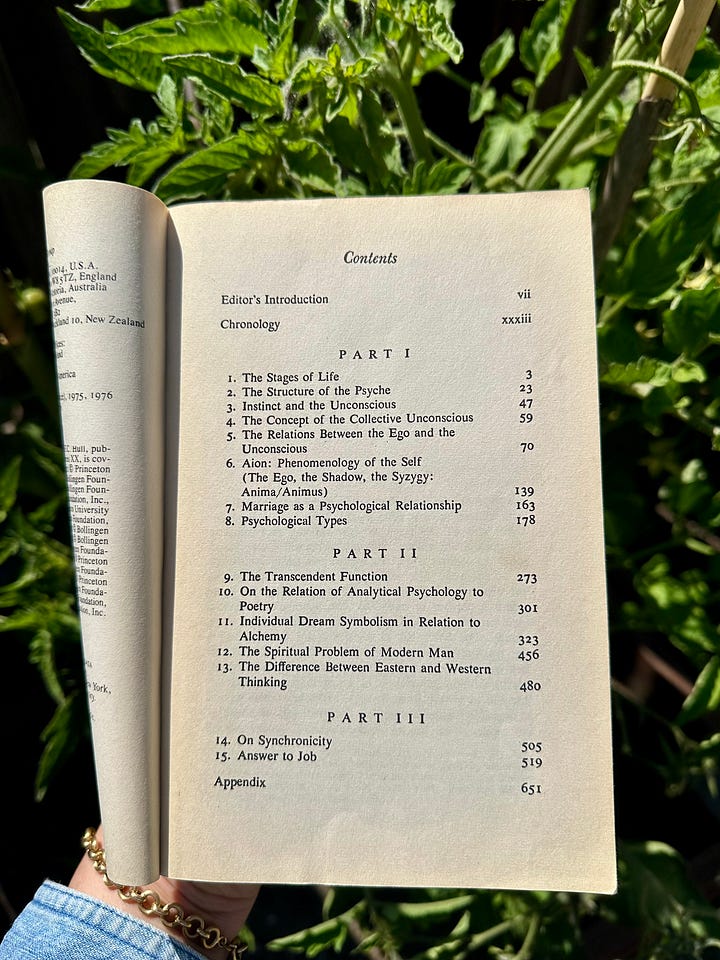
“My final aim, accordingly, has been to provide such a primer and handbook of Jung’s writings that if a reader will proceed faithfully from the first page to the last, he will emerge not only with a substantial understanding of Analytical Psychology, but also with a new realization of the relevance of the mythic lore of all peoples to his own psychological opus magnum of Individuation.”
— Joseph Campbell, editor of The Portable Jung
The Portable Jung is a collection of 15 essays drawn from The Collected Works, curated by the famed mythologist and scholar Joseph Campbell. It is a guidebook of Jung’s work, from foundational concepts like individuation and the unconscious, to investigations into alchemy, religion, and synchronicity. We are now in the depths of Jung’s academic writing, but with structure that traces the arc of his psychology, providing a comprehensive and thoughtfully organized overview for those ready to engage further.
I was first gifted The Portable Jung in the midst of reading Man and His Symbols. It became a natural evolution in my studies. The early books on this list laid a foundation, accessible texts that helped me to understand the motivations and inspirations of Jung’s psychology. Stepping into The Collected Works can feel overwhelming; it’s difficult to know where to begin. This anthology makes it easier, and as a bonus, you get to enjoy some of Joseph Campbell’s reflections in the editor’s introduction.
Join the conversation
What was the first book of Jung’s that you read? Do you have a favorite introductory text on Jungian psychology? Have you read any of the books on this list?
The other is Archetypal Studies, which you can read more about in this article.
In the classic Jungian typological sense, meaning that my main cognitive function perceives directly via the unconscious. My habitual way of relating is colored by immersion (and sometimes the overwhelm) of archetypal symbols, making connections that go beyond what is concrete, and being led by intuitive hunches/connections of inner and outer reality.
Where possible, I have provided a purchasable link for recommended books via Bookshop.org, an online marketplace that connects readers with independent booksellers. I also recommend checking out your local used bookstore or library for a copy of the books! *Please Note* I receive a small commission from the affiliate links.




What about delving into Jung's "RED BOOK?"
Great list, thanks for sharing! One of my earliest and absolute favorites is “The Undiscovered Self” - so remarkable how his analysis of society is still relevant all these years later. Also enjoyed “Analytical Psychology”, basically a transcript of his Tavistock lectures and all the q&a ranging from rude to just not getting it.